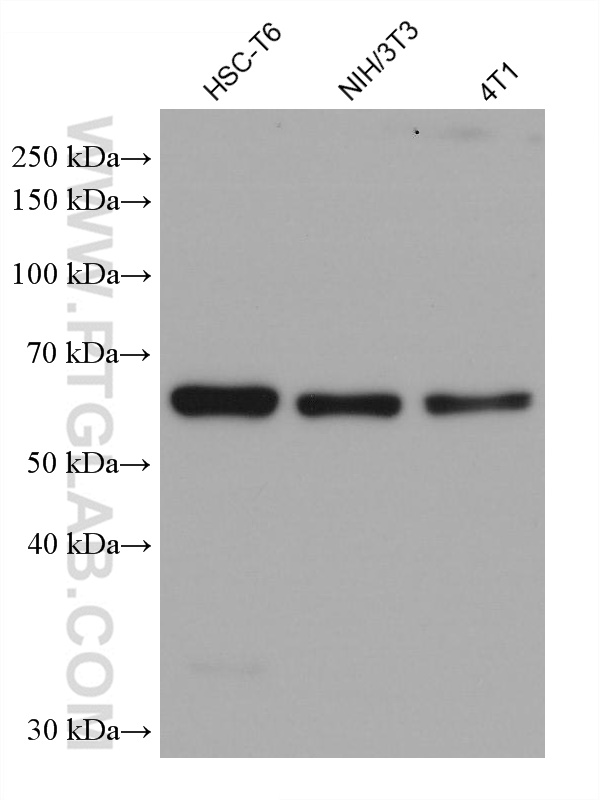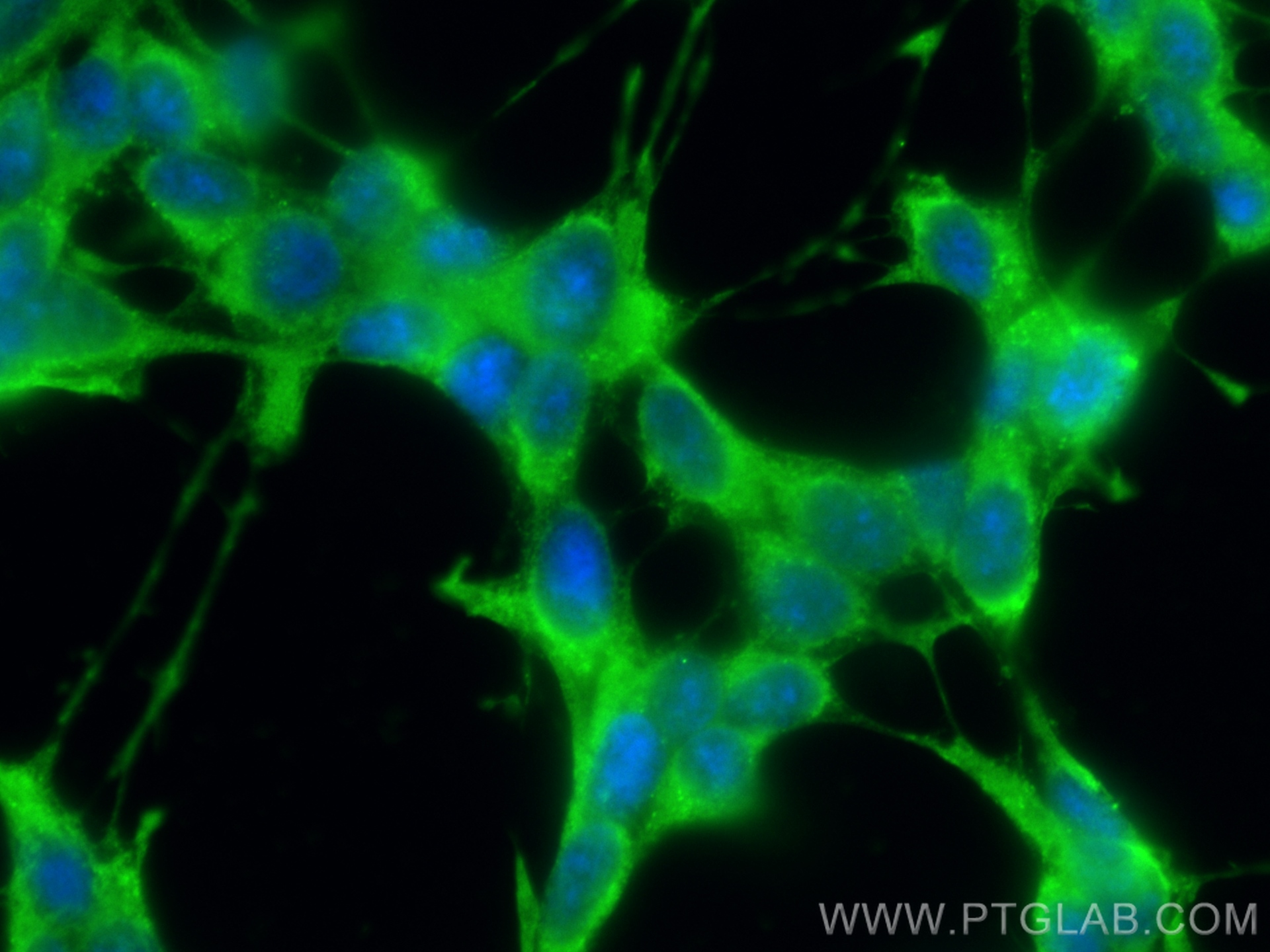验证数据展示
经过测试的应用
| Positive WB detected in | hTERT-RPE1 cells, HSC-T6 cells, NIH/3T3 cells, 4T1 cells, MDA-MB-231 cells, A549 cells, A431 cells, HepG2 cells |
| Positive IF/ICC detected in | SH-SY5Y cells |
推荐稀释比
| 应用 | 推荐稀释比 |
|---|---|
| Western Blot (WB) | WB : 1:5000-1:50000 |
| Immunofluorescence (IF)/ICC | IF/ICC : 1:200-1:800 |
| It is recommended that this reagent should be titrated in each testing system to obtain optimal results. | |
| Sample-dependent, Check data in validation data gallery. | |
产品信息
68846-1-Ig targets CORO1C in WB, IF/ICC, ELISA applications and shows reactivity with human, mouse, rat samples.
| 经测试应用 | WB, IF/ICC, ELISA Application Description |
| 经测试反应性 | human, mouse, rat |
| 免疫原 | CORO1C fusion protein Ag6546 种属同源性预测 |
| 宿主/亚型 | Mouse / IgG2b |
| 抗体类别 | Monoclonal |
| 产品类型 | Antibody |
| 全称 | coronin, actin binding protein, 1C |
| 别名 | CRN2, Coronin-3, Coronin-1C, Coronin 3, Coronin 1C |
| 计算分子量 | 53 kDa |
| 观测分子量 | 57 kDa |
| GenBank蛋白编号 | BC002342 |
| 基因名称 | CORO1C |
| Gene ID (NCBI) | 23603 |
| RRID | AB_3670439 |
| 偶联类型 | Unconjugated |
| 形式 | Liquid |
| 纯化方式 | Protein A purification |
| UNIPROT ID | Q9ULV4 |
| 储存缓冲液 | PBS with 0.02% sodium azide and 50% glycerol , pH 7.3 |
| 储存条件 | Store at -20°C. Stable for one year after shipment. Aliquoting is unnecessary for -20oC storage. |
背景介绍
CORO1C also known as HCRNN4, belongs to the WD repeat coronin family. CORO1C contains 5 N-terminal trp-asp (WD) repeats and a C-terminal coiled-coil motif. It was reported to regulate actin‐dependent processes by assembling F-actin. CORO1C promoted the invasion of breast cancer and glioma cells by specifically promoting the formation of invadopodia(PMID: 30974047).
实验方案
| Product Specific Protocols | |
|---|---|
| WB protocol for CORO1C antibody 68846-1-Ig | Download protocol |
| IF protocol for CORO1C antibody 68846-1-Ig | Download protocol |
| Standard Protocols | |
|---|---|
| Click here to view our Standard Protocols |


